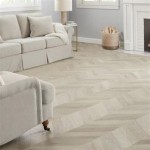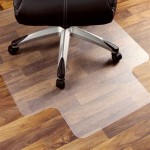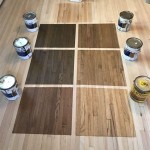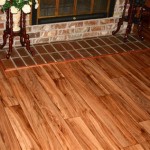Can You Lay Wooden Floor Over Tiles?
Renovating a floor can be a daunting task. One common question homeowners face is whether they can install wood flooring directly over existing tile. The answer, in many cases, is yes. However, several factors influence the feasibility and long-term success of this approach. Understanding these factors is crucial for making an informed decision and ensuring a durable, aesthetically pleasing result.
Assessing the Existing Tile
The condition of the existing tile floor is the first and most important consideration. The tiles must be firmly adhered to the subfloor. Loose or cracked tiles will create an unstable base for the wood flooring, leading to flexing, squeaking, and potential damage. Inspect the entire tiled area carefully, tapping each tile to check for hollowness or movement. Any loose tiles must be repaired or replaced before proceeding with wood floor installation.
Furthermore, the overall flatness of the tiled surface is critical. Wood flooring requires a level subfloor to prevent uneven wear and potential buckling. Significant variations in height across the tiled surface, such as dips or humps, will need to be addressed. Self-leveling underlayment can be used to smooth out minor imperfections, but larger irregularities may necessitate removing the tile entirely.
Finally, consider the type of tile. While ceramic and porcelain tiles generally provide a suitable base, some softer tiles, such as vinyl composition tile (VCT), may not be strong enough to support the weight and pressure of wood flooring. Consult with a flooring professional to assess the suitability of the specific tile type.
Choosing the Right Wood Flooring and Underlayment
The type of wood flooring chosen also plays a significant role in the success of installing over tile. Solid hardwood flooring, due to its susceptibility to moisture and expansion/contraction, is generally not recommended for installation over tile. Engineered wood flooring, on the other hand, is a more stable option. Its layered construction provides greater dimensional stability and resistance to moisture, making it better suited for this application.
Selecting the appropriate underlayment is crucial for creating a smooth, stable, and sound-absorbing base for the wood flooring. When installing over tile, a thin, dense underlayment is typically recommended. This type of underlayment helps to minimize height buildup while providing adequate support and cushioning. Some underlayments also offer moisture-resistant properties, which can be beneficial in areas prone to humidity.
The specific requirements for underlayment may vary depending on the manufacturer's recommendations for the chosen wood flooring. It's essential to consult the manufacturer's guidelines and choose a compatible underlayment to ensure proper installation and performance.
Installation Methods and Considerations
Several methods can be employed for installing wood flooring over tile. Floating floor installations, where the wood planks are clicked together and not directly fastened to the subfloor, are a popular choice for this application. This method allows the wood flooring to expand and contract naturally without being constrained by the tiled surface.
Gluing down engineered wood flooring directly to the tile is another possibility. However, this method requires a meticulously clean and well-prepared tile surface to ensure proper adhesion. Furthermore, the adhesive must be compatible with both the tile and the wood flooring. Consult with a flooring professional to determine the best adhesive for the specific materials being used.
Regardless of the chosen installation method, it's crucial to ensure proper acclimation of the wood flooring before installation. Acclimation involves allowing the wood to adjust to the temperature and humidity levels of the room where it will be installed. This process helps to minimize expansion and contraction after installation, preventing issues such as buckling or gapping.
Height Considerations and Transitions
Adding a layer of wood flooring over existing tile will inevitably increase the floor height. This increase can affect transitions to other flooring surfaces, such as carpet or tile in adjacent rooms. Consider the height difference and plan for appropriate transitions to create a seamless and aesthetically pleasing flow between rooms. Thresholds or reducer strips can be used to bridge the gap between different floor heights.
Furthermore, the increased floor height may affect the operation of doors, requiring adjustments to door jambs or the doors themselves. Carefully measure the height increase and plan for any necessary door modifications before installing the wood flooring.
Moisture Management
While engineered wood flooring is more moisture-resistant than solid hardwood, moisture can still be a concern, especially in areas like bathrooms or kitchens. Ensure that the existing tile floor is free of any moisture issues before installing wood flooring. Additionally, using a moisture-resistant underlayment can provide an extra layer of protection against potential moisture problems.
Proper ventilation is also essential for managing moisture. Ensure adequate airflow in the room to prevent moisture buildup, which can damage the wood flooring over time.

Can Timber Flooring Be Laid Over Tiles Cb Floors

Discover How To Lay Wood Floors Over Tile Flooring Blog

Install Hardwood Flooring Over Tile Floor Double Glue Down Method

Installing Luxury Vinyl Over Existing Tiles Choices Flooring New Zealand

What Type Of Flooring Can You Put Over Ceramic Tile

Flooring Laminate Or Engineered Wood Over Tile Dirt2tidy

Can Timber Flooring Be Laid Over Tiles Cb Floors

Can You Lay Vinyl Flooring Over Tile Mersey

Can You Lay Laminate Flooring Over Tile

Can You Install Wood Flooring Over Ceramic Tile







